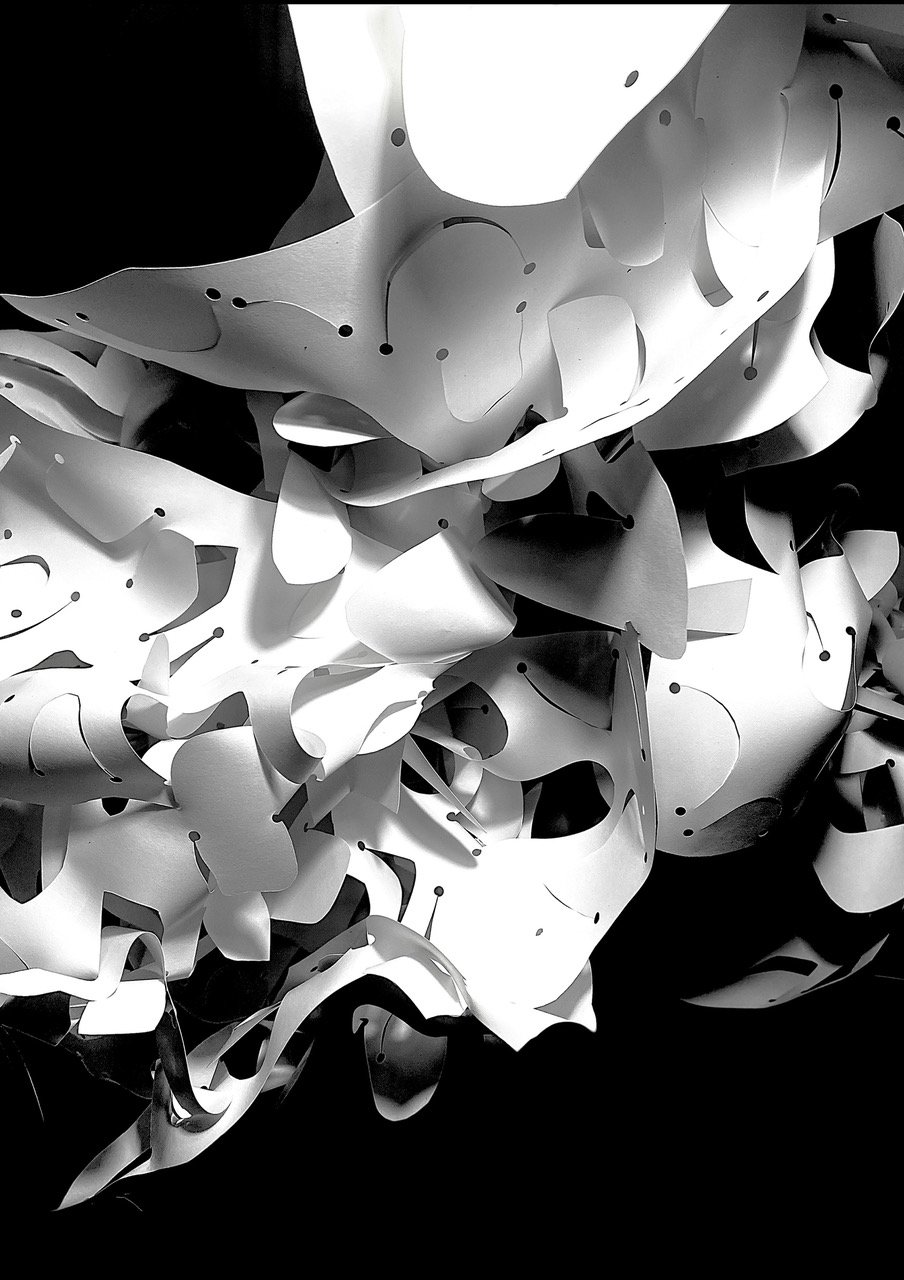k e l l y
c u m b e r l a n d

This practice research aims to contribute to and build upon the discussion around repetition and difference by examining a drawing through a series of rhythmic formulations that constantly change between stillness and movement. Concepts are considered around the 'gathering' and 'dispersal' of rhythm and pattern within drawing to highlight structural variations and possibilities. The relationship between pattern and a repetitive application of systematic, rhythmic working methods enables haptic spaces to evolve through the multiplication and reduction of marks. Generative and iterative approaches result in variations of dissected drawings and structural biomorphic installations. The relationship between pattern and a repetitive application of systematic and cyclical working methods enables haptic spaces to evolve through the multiplication and reduction of marks that become a record of time and the cycle of microscopic life. Shapeshifting cellular imagery is captured in various sculpted and spatialised black-and-white assemblages, recording sequences and behaviours that result in a rendition of changing forms and their various expansions and contractions. By disrupting a traditional approach to drawing, materials, and processes, repetitive, systematic modes of making are transposed from two to three, demonstrating how something seemingly delicate and insubstantial can overwhelm its environment. In this context, continuous addition, removal, (re)production, and reduction can result in a coherent body of structural biomorphic variations that become a record of time and the cycle of microscopic life. Working in sequence, the components appear identical. However, the process ensures each work is unique, retaining the possibility for expansion and modification. As an artist and PhD Researcher at the School of Design at the University of Leeds, I am privileged to work with esteemed neuroscientists Dr Heiko Wurdak and Dr Sabrina Samuel from the stem cell and brain tumour group in the School of Medicine, Wellcome Trust at St James's Hospital. Their areas of expertise include stem cells, organoids/assembloids, developmental signalling, and cell fate, which greatly enrich our ongoing project.We are engaged in an ongoing project, which explores commonalities of process between modes of drawing and laboratory practices and offers that material experimentation and non-traditional drawing processes provide a symbolic way to evoke ideas around the internal body as an attempt to transpose the theoretical into the physical.This work is not just a visual representation but a testament to the transformative power that can occur when art and science intersect. This cross-disciplinary project has the potential to inspire and enrich both art and science, adding a new dimension to the 'invisible world' and potentially leading to innovative ideas and solutions that may not be apparent through traditional scientific methods. Visual installations offer a unique interpretation of the raw data, provide moments of reflection, and have the potential to inspire scientists to think differently and members of the public to view science in new ways. The audience does not need to realise they are observing an artist's interpretation of neuroscience (unless informed by reading the accompanying text). Still, importantly, this interaction requires no prior knowledge of the discipline or the creative process. It broadens exposure and generates visuals that scientific data cannot achieve alone, enhancing awareness.